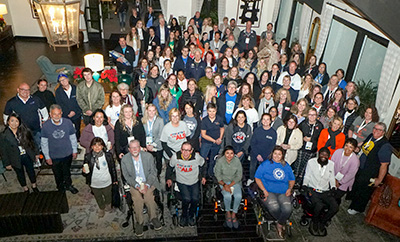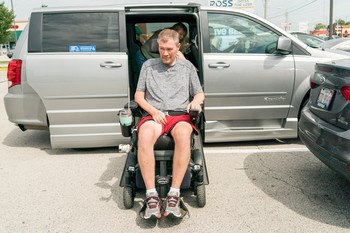Everything looks so nice and tidy on a map. Roads are clearly indicated, as are cities and towns. You can easily see how to get from here to there. But as anyone who has ever missed a turn or found themselves off their intended path will tell you, any map is only as good as the information that went into making it.
For people with ALS, having access to an ALS multidisciplinary care center has been proven to both extend survival and enhance the quality of life for the people that attend. Across the nation, there are currently 76 ALS Association Certified Treatment Centers of Excellence and 18 Recognized Treatment Centers serving people with ALS through the multidisciplinary care model. All of which must meet specific criteria of The ALS Association Center Program, based on the American Academy of Neurology Practice Parameters and Quality Measures, and 30 more working through the process to join them. All of these clinics are neatly plotted on our locator map, making them easier for people living with ALS and their families to find.
But a map of ALS multidisciplinary care centers is only the beginning of the story. These clinics serve more than 12,000 people with ALS each year, and by analyzing more available data, The ALS Association can explore ways to ensure more people with ALS are able to benefit from the advantages multidisciplinary care provides. The answer to how is through the “Science of Where.”

In late 2022 at the International Alliance of ALS/MND Association meeting, ALS Association team members Lori Banker-Horner, Senior Director, Clinical Programs and Maureen Clark, Director, Business Intelligence, presented on how the Association is using data to not only see who we currently serve throughout our clinic network, but also how we can improve access to our network to serve more.
As Lori explained, there are quite a few questions to consider. “Identifying areas of need, including those individuals who are unserved or underserved with limited clinic access, and what can we do to potentially meet those needs?” she said are key. “We also have to understand that some individuals have access to multidisciplinary care clinics but aren't attending them. So what do we do about that and how do we understand that better? So really it is from both understanding how to make clinics' multidisciplinary care more accessible, as well as understanding what the factors are that prevent individuals from attending clinics they do have access to.”
When you ask those sorts of big questions, you need big help to find some of the answers. Fortunately, we can find at least some of that help in the form of “big data,” as Mauri explained. “Over the past two years at The ALS Association, we have begun to use a technology called GIS to help us begin to think spatially and use this knowledge to explore, understand, and strategize for the future. GIS stands for Geographic Information Systems and is known as ’The Science of Where.’ GIS is a system that allows us to use software to make sense of data when placed on a map.”

For instance, after plotting a map of clinics, GIS allows that map to be overlayed with data that shows where in the country people with ALS, that have registered with The ALS Association, are. This data may indicate where new clinics might be beneficial to the ALS community. By adding an additional layer of data about people with ALS who attend a clinic, and those registered who do not, we can also gain insights into if areas with clinics might need more resources to serve the community, or if travel assistance might be the answer to increasing access.
By adding additional government data sets, GIS can present a picture of how clinic access might be impacted in areas that may face economic, cultural, or language barriers to health care, or even areas lacking internet access. Having a better understanding of these variables can be helpful in many ways. “You're making these much more informed decisions. You're able to have data behind it to say all of this makes sense,” Lori says. “What it can do also is open up doors for (funding) grants. Data that (the) government or even state governments might need in terms of providing grants for clinics. It's opening up a lot of different possibilities that we didn't have before because (our information) was all very much anecdotal.”
While there is still much to learn from “The Science of Where” in providing increased access to multidisciplinary care for people with ALS, the future uses of GIS for The ALS Association are nearly limitless. Data is a universal language, so the possibilities of collaboration in the fight against ALS around the globe are part of an exciting future. “Being able to collaborate with the different departments, whether it's mission, whether it's advocacy, whether it's volunteer engagement, care services, it's understanding data,” Mauri says. “Then how can we use this data to better our decision making.”
Over the next several months, we will be sharing more about the ongoing worldwide progress taking place in ALS research, care and advocacy in our series “ALS Around the Globe.” We hope you will follow along and share with your family and friends.
To continue to follow stories about people living with ALS in the community and learn more about the disease, subscribe to receive our weekly blogs in your inbox HERE or follow us at als.org/blog.



Join the conversation. Please comment below.